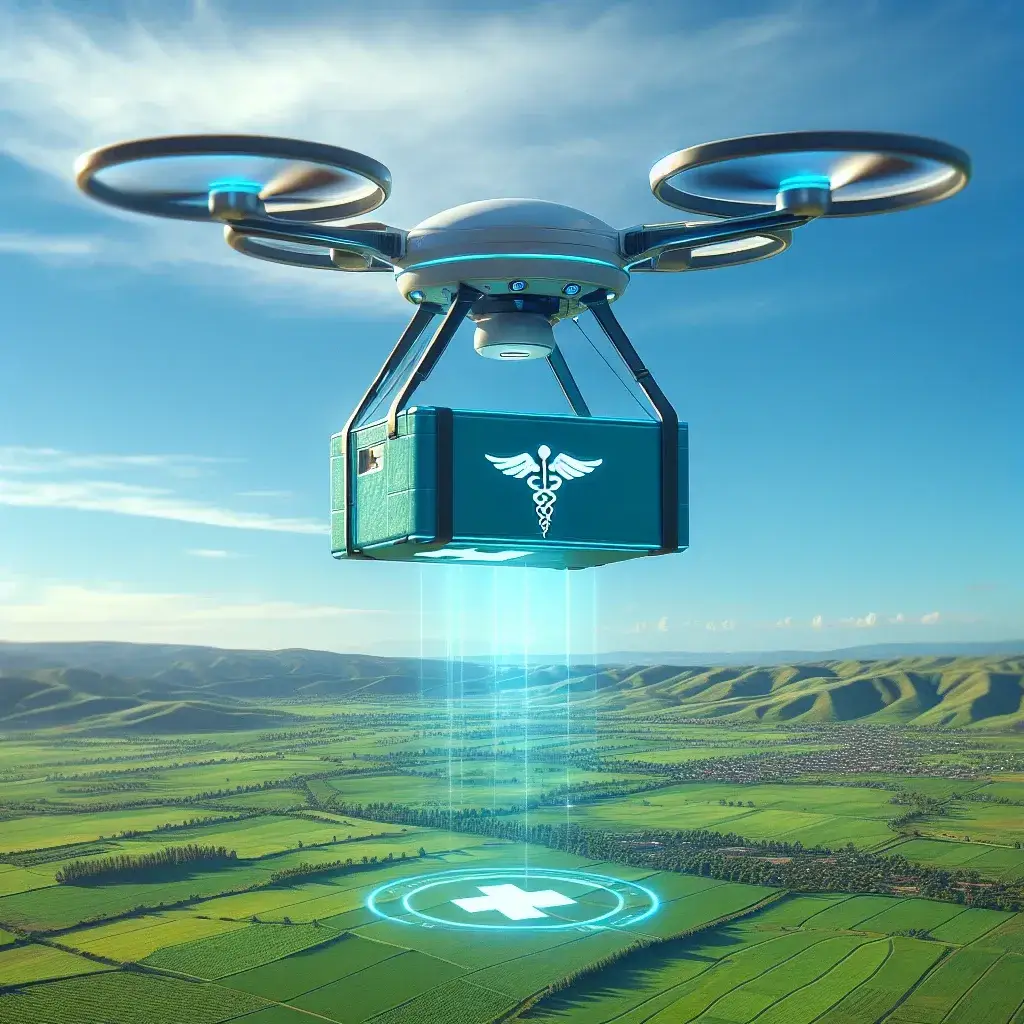Introduction
In a revolutionary step for healthcare logistics, prescription delivery drones have recently received nationwide approval for deployment in rural areas. This innovative solution aims to bridge the healthcare accessibility gap faced by many residents in remote locations, providing them with timely access to essential medications. In this article, we will delve into the historical context of drone technology in healthcare, its current implications, future predictions, and the pros and cons of this groundbreaking development.
The Historical Context of Drone Delivery
The concept of using drones for delivery is not entirely new. The idea took flight in the early 2010s, with numerous pilot programs exploring the potential of unmanned aerial vehicles (UAVs) in various sectors, including agriculture, logistics, and healthcare. Companies like Zipline pioneered the use of drones to deliver blood and medical supplies to hard-to-reach locations, particularly in African nations. These early successes laid the foundation for broader acceptance and interest in drone deliveries, culminating in the recent nationwide approval for prescription deliveries.
How Drones Work in Prescription Delivery
Prescription delivery drones operate using advanced navigation systems, including GPS and onboard sensors, to navigate to their destinations. Typically, the process involves pharmacies collaborating with drone service providers to package medications securely. Once ready for delivery, the drone is dispatched, flying directly to designated drop-off points. This method not only speeds up the delivery process but also reduces the risk of medication errors that can occur during manual handling.
Nationwide Approval: What It Means
The recent approval by regulatory bodies, including the Federal Aviation Administration (FAA), signifies a turning point in the integration of drone technology into everyday healthcare services. By allowing drone deliveries in rural areas, the government aims to enhance access to healthcare, particularly for those living in remote regions where pharmacies may be few and far between.
Benefits of Prescription Delivery Drones
- Improved Access: Rural populations often struggle with limited access to pharmacies. Drones can help deliver medications quickly and efficiently, ensuring that patients do not miss critical doses.
- Time-Saving: Drones can significantly reduce the time it takes for prescriptions to reach patients, often delivering medications in under 30 minutes.
- Cost-Effective: Although initial investment in drone technology can be high, the long-term operational costs may be lower compared to traditional delivery methods.
- Environmentally Friendly: Drones have a smaller carbon footprint compared to delivery trucks, making them a more sustainable option for medication deliveries.
Challenges and Considerations
Despite the numerous benefits, the implementation of prescription delivery drones is not without its challenges. Some of the key concerns include:
1. Regulatory Compliance
While nationwide approval has been granted, ongoing compliance with safety and operational regulations will be essential. Companies must ensure that their drones adhere to strict guidelines to guarantee safe flights.
2. Infrastructure Development
The current infrastructure may require significant upgrades to accommodate drone landing zones and charging stations. Rural areas, in particular, may need to invest in these facilities to fully utilize drone delivery services.
3. Public Acceptance
For drones to be widely accepted, public education on their safety and benefits will be crucial. Some residents may have reservations about drones flying over their properties, necessitating community engagement and transparency.
Future Predictions for Drone Deliveries
As technology continues to evolve, the future of prescription delivery drones looks promising. Here are some predictions:
- Increased Adoption: As more companies invest in drone technology, we can expect a surge in adoption rates among pharmacies, potentially leading to a standard practice in rural healthcare delivery.
- Integration with Telehealth: The rise of telehealth services during the pandemic has changed patient interactions with healthcare providers. Drones could work in tandem with telehealth consultations, delivering prescriptions directly to patients’ doorsteps after virtual appointments.
- Expanded Services: Beyond just prescription medications, drones may also be utilized to deliver medical supplies, vaccines, and even healthcare equipment, further enhancing rural healthcare capabilities.
Real-World Examples and Success Stories
Numerous pilot programs and successful implementations provide tangible evidence of the effectiveness of drone deliveries in healthcare. For instance, in North Carolina, Zipline has been delivering blood and medical supplies to rural hospitals for years, demonstrating how drones can save lives in critical situations.
Cultural Relevance of Drones in Healthcare
In many cultures, access to healthcare is a significant concern. The introduction of drones in rural healthcare settings resonates with the need for equitable healthcare access. By ensuring that patients receive their medications promptly, drones can play a crucial role in improving health outcomes and fostering trust in the healthcare system.
Expert Opinions on the Future of Drones
Healthcare experts and drone technology pioneers share a common belief in the transformative potential of drones. Dr. Lucy Evans, a healthcare technology strategist, states, “Drones represent an innovative solution to the logistical challenges faced by rural healthcare providers. Their ability to deliver medications swiftly can be life-changing for many patients.”
Conclusion
The recent nationwide approval for prescription delivery drones marks a significant advancement in rural healthcare. As technology continues to evolve, and as more pharmacies embrace this innovative delivery method, we can anticipate a future where access to healthcare is no longer hindered by geographical barriers. Prescription delivery drones are not just a trend; they signify a pivotal shift towards more efficient and equitable healthcare solutions.
Call to Action
As we move forward, it is essential for healthcare providers, policymakers, and communities to collaborate in supporting the integration of drone technology in healthcare logistics. By advocating for responsible implementation and addressing the challenges, we can ensure that everyone, regardless of their location, has access to the medications they need.




Leave a Reply